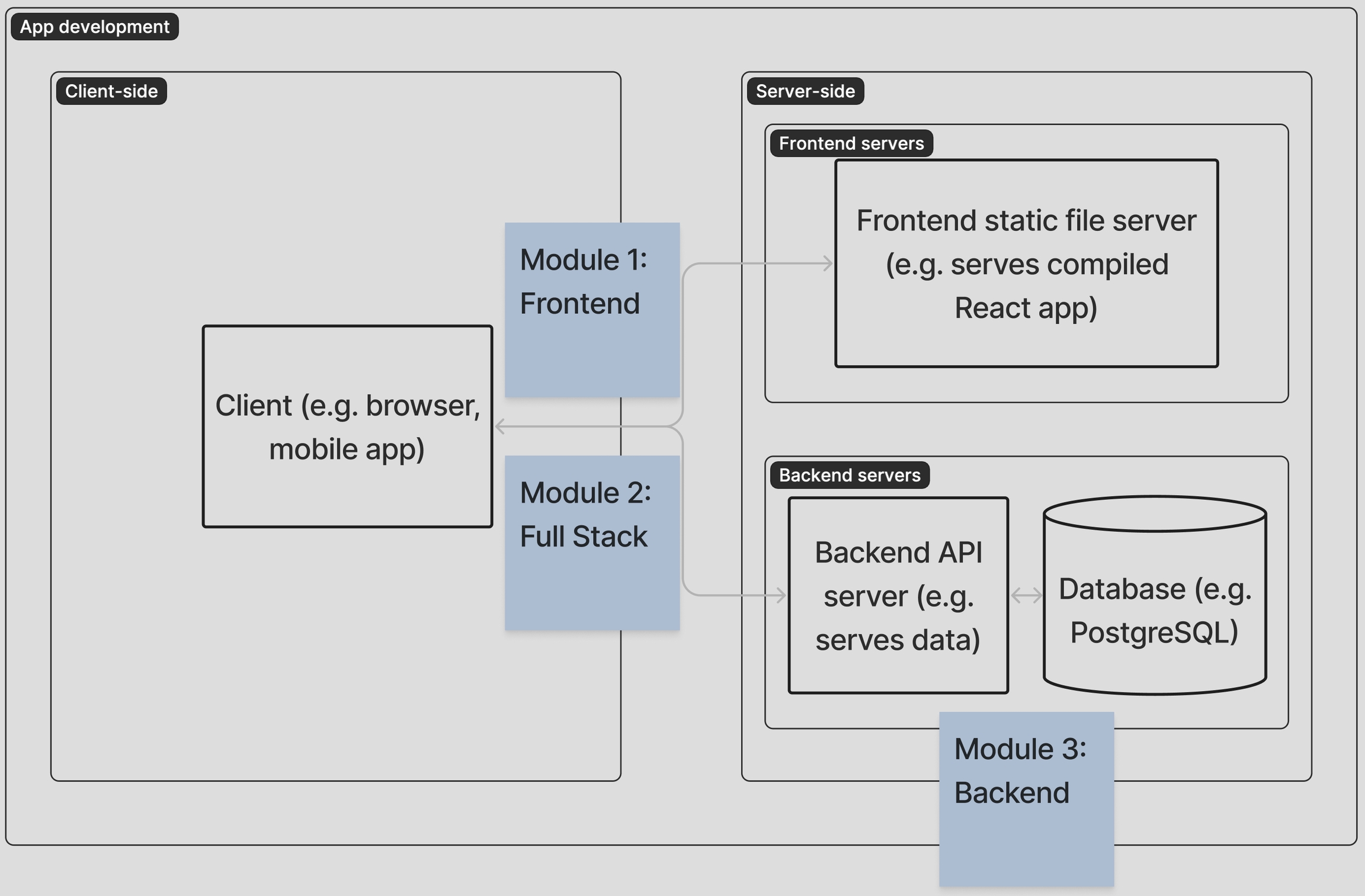🤖3: Backend
Learning Objectives
Backend refers to non-client computers that perform logic, store and serve data
Servers are computers without a screen that receive requests from clients and respond with data
SQL is the language for querying relational databases; PostgreSQL is a popular dialect
Sequelize is an ORM (Object-Relational Mapping) that enables us to write code that generates SQL
JWT authentication is the de-facto authentication standard
Sockets allow us to transmit data and update UIs in real-time
Deploy a backend server to Heroku that can store and serve data for our frontends
Introduction

In Module 3: Backend we will build a backend server that performs logic, stores and serves data to our frontends using the JavaScript server framework Express.js. Our backends will use relational (tabled-based) databases (aka SQL databases, pronounced "sequel") instead of the JSON-like databases we used with Firebase. Most companies use SQL databases for the majority of their use cases because SQL can be more structured has less potential for human error.
Last updated